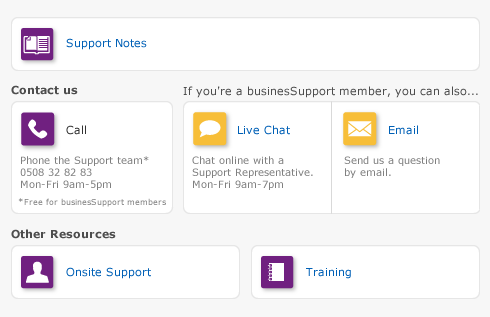Importing and exporting data > Managing import and export records
If your accountant uses Accountants Office, an accounting solution widely used by public accountants in practice, you can easily import the Accountants Office Accounts List used by your accountant into your company file.
After you import your accountant’s Accounts List, the accounting information you export will match the accounts list used by your accountant; this enables an easy exchange of information from your company file to Accountants Office.
Before you begin the import process, you must obtain from your accountant a text file (files with an extension of .txt) containing an accounts list from Accountants Office. To learn how to create the file, check the Accountants Office documentation.
To import an Accountants Office List of Accounts
|
1
|
Choose AccountantLink from the File menu, then choose Receive from Accountants > Lists of Accounts from the submenu. An alert message appears.
|
|
2
|
|
3
|
Select the text (.txt) file that contains the Accountants Office accounts list and click Open.
|
When the import is complete a message will show the number of records imported. If some records were skipped during the import process, or some other event occurred, a message will appear in this window, indicating that the Import Log report was created.
Transactions from Quicken can be imported into your company file. To import Quicken transactions, you must create a Quicken (QIF) file that contains the transactions. (In Quicken, you’ll choose File > Export Custom > Transactions. You’ll then choose the accounts that are associated with the transactions you want to export. For example, you may wish to export your banking and credit card transactions, but not transactions associated with your investment or brokerage accounts. Refer to your Quicken documentation for information about export options and QIF files.)
AccountRight checks each account associated with transactions in the Quicken (QIF) file when you import the file. If the Quicken account doesn’t match any account in your company file, the Choose an Account window will appear.
Using the window, you’ll match the Quicken account with an account in your software. If you don’t match an account, one will be created for you using the name of the Quicken account or a default account name.
note : Turn off category tracking
If you selected Category Tracking in the System view of the Preferences window and you’ve selected the Required option, deselect it or turn off the option before importing your QIF information. Otherwise, the import will not be successful.
|
1
|
Choose Import Data from the File menu, then choose Quicken (QIF) File from the Import Data sub-menu. A selection window appears.
|
|
2
|
Select the QIF file you want to import. click OK. The import process begins.
|
Importing from RetailManager
You can import journal entries from RetailManager into your company file.
You can export RetailManager data to a text file (.txt) and save it to the same location as your AccountRight software company file. Then, when you open your company file, AccountRight will automatically check for the retail.txt file.
Before you import RetailManager information, ensure that you use the same GST codes and rates in both programs.
To import from RetailManager
|
1
|
|
2
|
AccountRight will automatically check for the retail.txt file.
|
|
3
|
Exporting information for use with Accountants Office
You can export your accounting information to a compressed tab‑delimited text file that can be read by Accountants Office. You can export your accounts list (account number, account name, account opening balance and Accountant Code), journal entries, sales and purchases.
You can also export reports in PDF format that will provide your accountant with additional information and to alert them to any irregularities in the data.
|
▪
|
Receivables Reconciliation Exceptions
|
|
▪
|
Payables Reconciliation Exceptions
|
|
▪
|
Inventory Value Reconciliation Exceptions
|
|
▪
|
GST Amount Variance Sales
|
|
▪
|
GST Amount Variance Purchases
|
|
▪
|
GST Code Exceptions Invoices
|
|
▪
|
GST Code Exceptions Cash.
|
To export data for use with Accountants Office
|
1
|
Click Send to Accountant in the Accounts command centre. The Reporting Period window appears.
|
|
2
|
Select the period of the transactions and reports you want to be exported. (To select a range of months, hold down the mouse button while you move the cursor over the range of months.)
|
It’s important not to include dates you’ve included in a previous export, since this would result in double-counting your transactions. As a precaution, we recommend that you tell your accountant the period you’ve selected.
|
▪
|
If you want to send the file as an attachment to an email message, you can enter a linked card in the Linked Card for Accountant field and then click the Email button. (If you’ve entered an email address on the card, the email address will appear automatically when the email is created by your email program.)
|
|
▪
|
If you want to save the file to disk, click the Disk button. A “save” dialogue box appears, allowing you to enter a name and location for the export file. The name that appears automatically is XXX.mye (Company.mye). You can change the file name if you want, but you must use the .mye extension.
|

